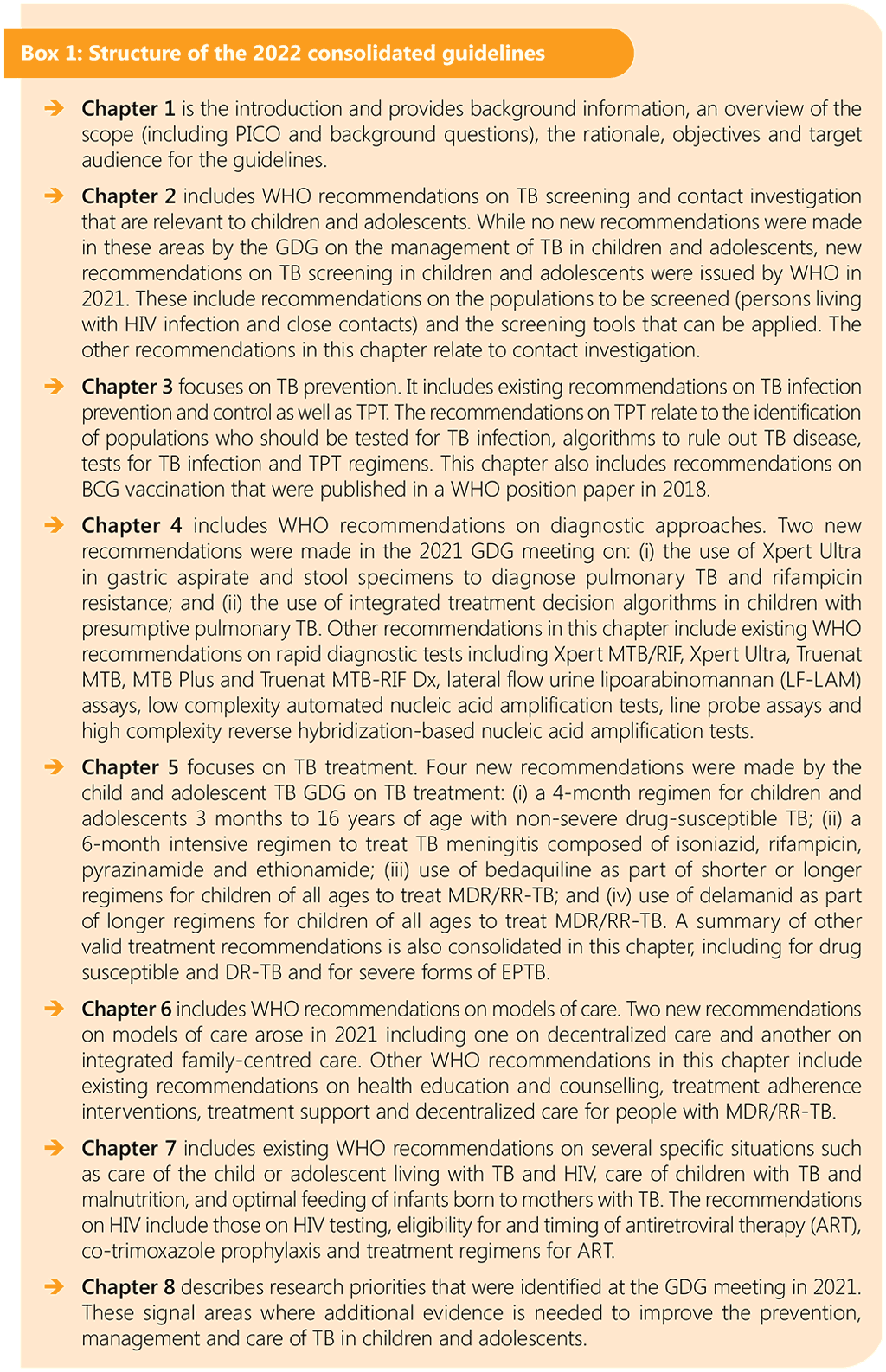3. Prevention of TB
This chapter includes current WHO recommendations that apply to children and adolescents on TB prevention. They have been consolidated from current WHO guidelines on TB infection, prevention and control, a BCG position paper and guidelines on TPT, namely the WHO guidelines on tuberculosis infection prevention and control, 2019 update (12), the BCG vaccines: WHO position paper (published in the Weekly Epidemiological Record) (13) and the WHO consolidated guidelines on tuberculosis. Module 1: prevention - tuberculosis preventive treatment (14).
 Feedback
Feedback